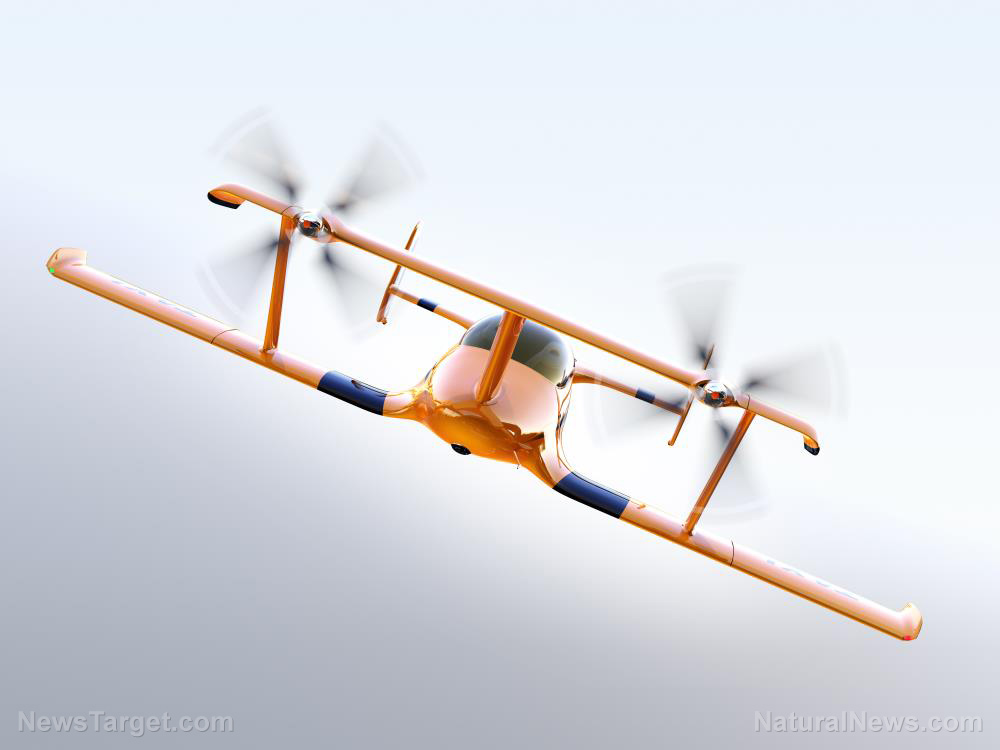Navy developing sonic weapon that makes its target unable to speak
08/27/2021 / By Franz Walker

The U.S. Navy is currently developing a non-lethal weapon that uses a target’s own voice against them, rendering them unable to speak.
Called the Acoustic Hailing And Disruption (AHAD) system, the handheld device records a target’s voice using a long-range microphone. It then amplifies it and plays it back on two distinct tracks, one nearly simultaneous with the original speaker and another with a slight delay of a few hundred milliseconds.
AHAD then focuses these tracks onto the target, using a phenomenon called delayed auditory feedback to confuse the target.
“Due to the delayed auditory feedback effect, the target speaker’s concentration will be disrupted, making it difficult for them to continue speaking,” reads a patent description of the device, which is credited to Christopher a Brown, of the Naval Surface Warfare Center near Bloomington, Indiana.
Nave spending millions on sonic weapons
AHAD works through the use of a parametric speaker. This is a speaker that directs high-intensity sound into a relatively small area – similar to how lasers do so with light.
This also means that the recorded chatter would be inaudible to anyone else. Bystanders would simply see the target having trouble speaking for no obvious reason.
The concept of using sound-based non-lethal weapons isn’t new. Armed forces have been using long-range sonic technology on ships, checkpoints and other vehicles for decades. They’re often used to warn people they’re approaching a restricted area.
“It is an audible cue to let people know not to come any further – targeting someone with a warning tone and speaking through this device,” said Navy Lt Cmdr Lance Lantier of one such device in 2009. “Non-lethal weapons provide warfighters escalation-of-force options. It’s a matter of how we can first try to alter someone’s behavior without using lethal force.”
The Navy has awarded millions of dollars to companies, such as Genasys, to develop and deliver non-lethal sonic weapons, ever since the bombing of the USS Cole off the coast of Yemen in 2000. The thinking is that these devices can much more effectively deter attackers than warning shots. Immobilizing with ear-splitting alarms without actually killing them.
That said, existing devices rely on inputs from operators to be effective. The AHAD system, on the other hand, is the opposite. It functions purely by turning a target’s own voice against them, effectively disorienting them into silence.
When AHAD will see action is unknown. Brown’s patent for it was only approved in June, so it might be a while before it enters the hands of U.S. warfighters.
Disorienting non-lethal weapons on the rise around the world
AHAD is just the latest non-lethal weapon designed to confuse a target into submission.
One particular device, the Long-Range Acoustic Device (LRAD), has made the news in recent years for its use by local law enforcement as a means of non-lethal crowd control.
Meanwhile, in 2019, Russia outfitted two warships with a special optical interference weapon that can induce vomiting and even hallucinations in targets. Called the 5P-42 Filin, the weapon emits a dazzling strobe-like beam that can disrupt an enemy’s eyesight – causing them to miss their target and even induce nausea — without causing permanent damage.
In addition, the device can also suppress infrared lasers and night-vision devices, as well as the guidance systems of anti-tank guided missiles, at a range of up to three miles.
Interestingly enough, AHAD may give clues to the cause of the so-called “Havana Syndrome.” This is a mysterious set of illnesses that have hit U.S. diplomats and intelligence agents in Cuba and elsewhere. (Related: Mysterious “Havana syndrome” affects more American diplomats, soldiers and spies than previously thought.)
AHAD’s effects are similar to the symptoms experienced by the victims of Havana Syndrome, lending credence to the theory that it’s caused by a clandestine sonic device used by a foreign adversary.
Follow MilitaryTechnology.news for more on advanced non-lethal weaponry similar to AHAD.
Sources include:
Tagged Under: Acoustic Hailing And Disruption, AHAD, military tech, military technology, Navy, non-lethal weapons, sonic weapons, U.S. Navy, weapons technology
RECENT NEWS & ARTICLES
COPYRIGHT © 2017 INVENTIONS NEWS





















